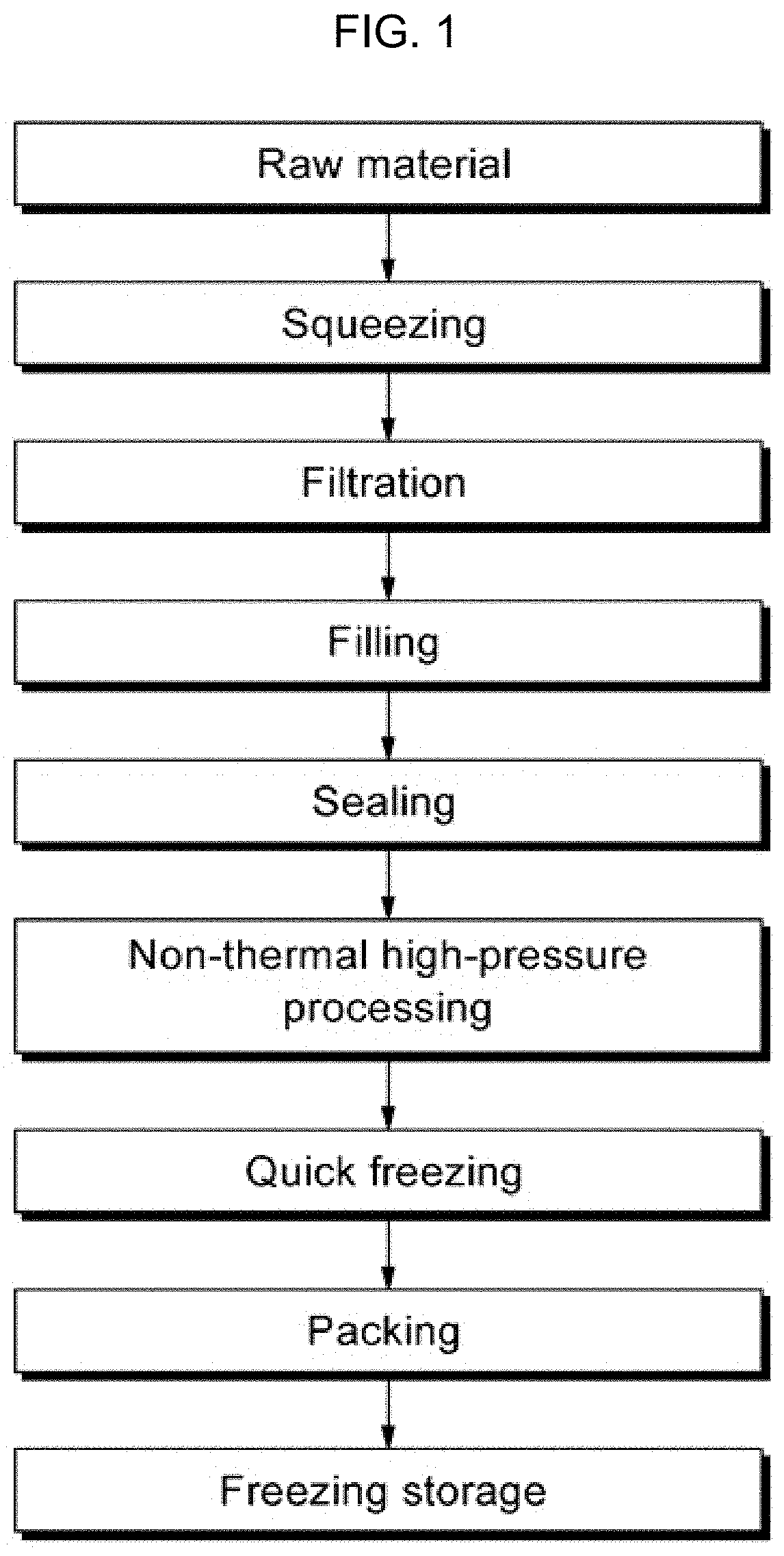Method for producing pulp-containing juice and pulp-containing juice produced thereby
a technology which is applied in the field of pulp-containing juice and pulp-containing juice produced thereby, can solve the problems of reducing the taste of raw materials, avoiding drinks containing such colorants, and reducing the selection of drinks. the effect of quality reduction, extending the shelf life of products, and maintaining freshness, taste, flavor and color of products
- Summary
- Abstract
- Description
- Claims
- Application Information
AI Technical Summary
Benefits of technology
Problems solved by technology
Method used
Image
Examples
example 1
n of Watermelon Juice
[0030]A ripe watermelon (produced in Vietnam) was washed in running water to remove foreign matter and then cut. The cut watermelon was squeezed with a hydraulic oil pressure juicer (58 to 116 psi) to obtain watermelon juice from the watermelon pulp. The watermelon juice was filtered through a 100-mesh filter, a PET bottle was filled with the filtered juice and sealed at a temperature of 10° C. or below, and a label (product information and expiration date) was attached to the bottle, thereby producing final watermelon juice. The final watermelon juice was placed in an high-pressure system and sterilized by non-thermal processing at 5,500 bar for 120 seconds. Then, the sterilized watermelon juice was transferred to a freezing warehouse and frozen at −35° C. for 12 hours. The frozen watermelon juice was packed and stored at −18° C. or below.
example 2
n of Calamansi Juice
[0044]Ripe calamansi (produced in Vietnam) was washed in running water to remove foreign matter and then cut. The cut calamansi was squeezed to obtain calamansi juice from the pulp. The calamansi juice was filtered through a 100-mesh filter, a PET bottle was filled with the filtered juice and sealed at a temperature of 10° C. or below, and a label (product information and expiration date) was attached to the bottle, thereby producing final calamansi juice. The final calamansi juice was placed in an high-pressure system and sterilized by non-thermal processing at 5,500 bar for 120 seconds. Then, the sterilized calamansi juice was transferred to a freezing warehouse and frozen at −35° C. for 12 hours. The frozen calamansi juice was packed and stored at −18° C. or below.
PUM
 Login to View More
Login to View More Abstract
Description
Claims
Application Information
 Login to View More
Login to View More - R&D
- Intellectual Property
- Life Sciences
- Materials
- Tech Scout
- Unparalleled Data Quality
- Higher Quality Content
- 60% Fewer Hallucinations
Browse by: Latest US Patents, China's latest patents, Technical Efficacy Thesaurus, Application Domain, Technology Topic, Popular Technical Reports.
© 2025 PatSnap. All rights reserved.Legal|Privacy policy|Modern Slavery Act Transparency Statement|Sitemap|About US| Contact US: help@patsnap.com


